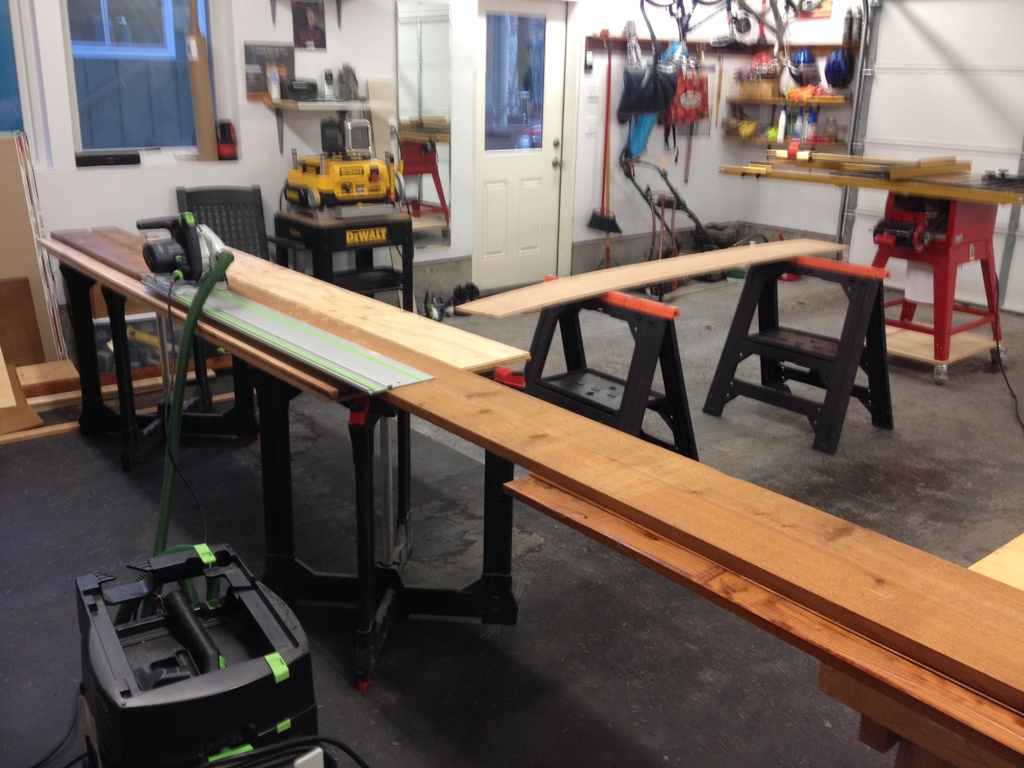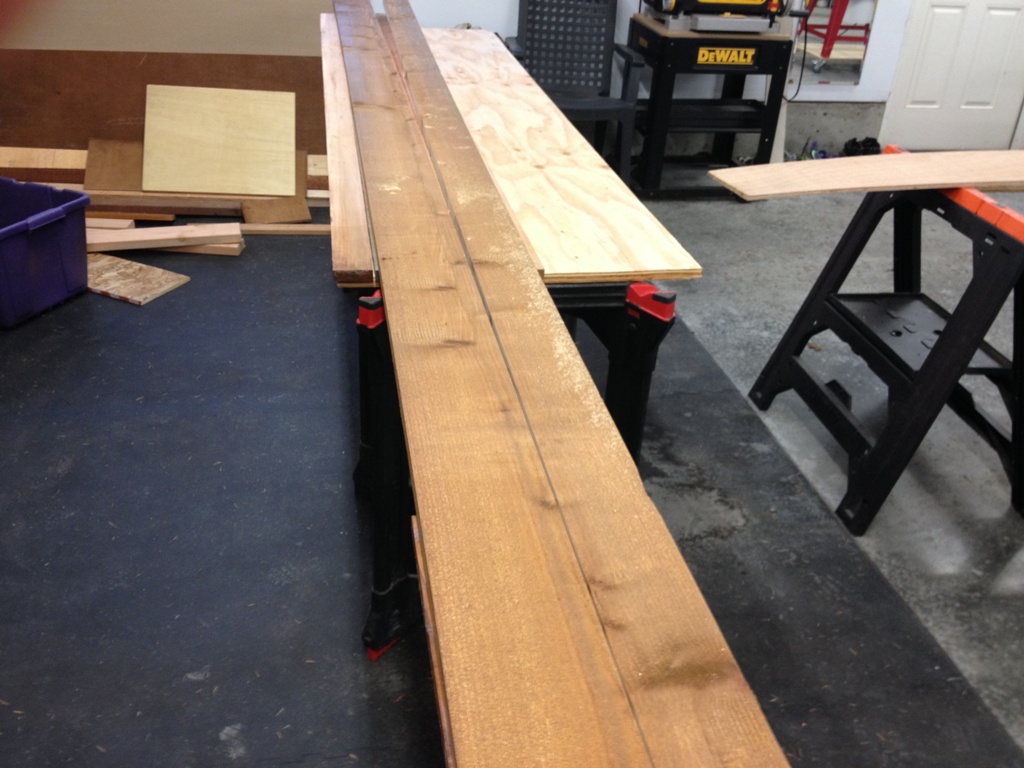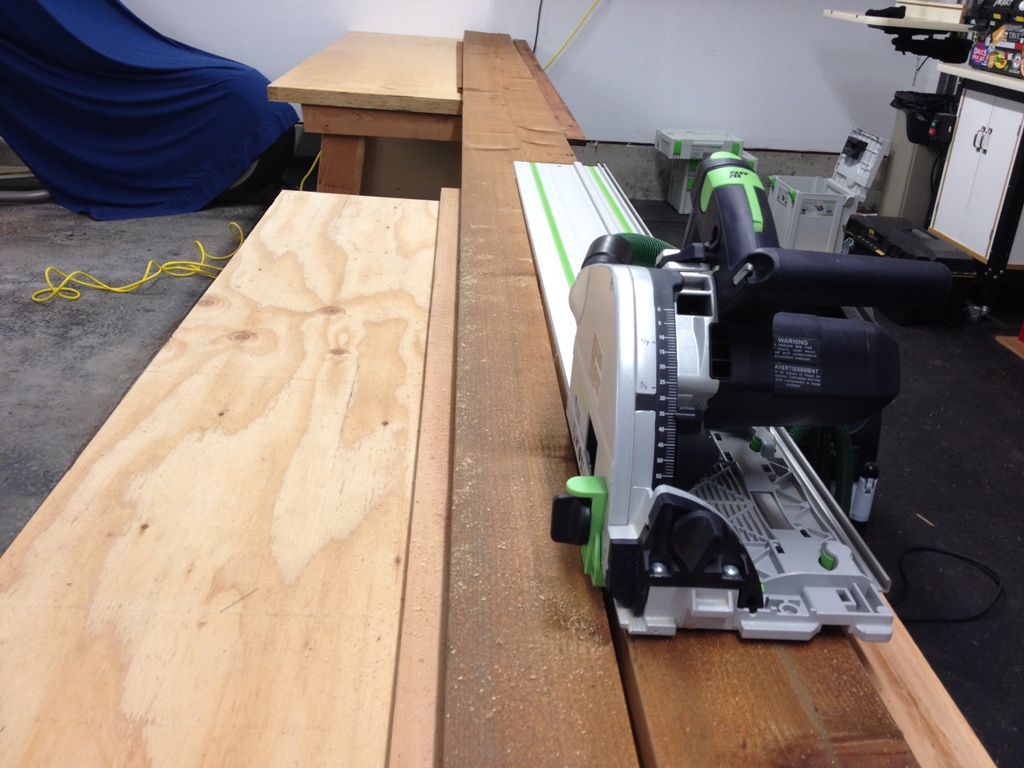So I have this piece of rough hewn cedar leftover from the garage construction. It’s about 1″ thick and 10″ wide, and 20 feet long. Yes, 20 feet long. Hell, until I moved to Orcas I didn’t even know they made trees that high. I can’t imagine what it cost. I held onto it, of course. You see, woodworkers are also wood collectors, and the more active ones can accumulate 35 pounds of scrap wood per month. We keep it all. You never know when you’ll need a piece of wood just that size.
Well, it turns out I did need this 20′ monster beam for some trim work, but it needed to be 5 1/2 inches wide. All I’d need to do is run a saw blade in a straight line all down it’s full length. That’s called a rip cut, when you cut along the length of a beam of wood. I was going to do this on the table saw and I even set everything up and then decided that was absurdly unsafe. It would have gone down as one of the top ten stupidest things I’ve ever done. That’s a tough list to get on, believe me.
Wood is normally solid and strong, but at that length it’s like a heavy, floppy piece of rubber with the added benefit of generating skin-boring splinters. One dry run over the table saw (with the blade down and the saw unplugged) and I could see right away there was no way the wood would remain straight and flat on the table surface. It would bow, twist, bend, and just generally be a turkey. The table saw blade could bind and shoot the lumber into the air like a 20′ bullet, or pieces could splinter off in an exploding grenade fashion, or it could simply catch fire from the friction. Yeah, dumb idea.
So, Festool to the rescue. Their tools have a good combination of safety, accuracy and comfort. Their plunge saw is pretty good and I have a little rail system that keeps it in a straight line and puts the saw blade exactly where you want it to go. Just to be safe I first cut halfway through the lumber, then made a second pass all the way through. The rails ensured each cut was in exactly the same place. The final cut was seamless, with nary a saw mark along its length.
Because my rail is about 1/6 of the length of the lumber, it took a few passes to get through the whole thing. And fortunately the beam didn’t want to pinch together when it was cut apart. Wood sometimes does that, since wood fibers are like a series of little springs. This particular board spread apart when cut. That was lovely. Sometimes it wants to pinch together, and you have to use little wedges and spacers as you cut it apart. Otherwise it will pinch the saw blade, causing it to bind and creating a very unsafe place to be.
There’s a panoramic pic of the whole thing (click on it to see full size). It ran the entire length of the back of my shop. I know you non-woodworkers are shrugging your shoulders like it’s no big thing, but to me this is one of those milestones, like bench pressing 365 pounds, or making homemade tamales for the first time. It’s a woodworking thing. You wouldn’t understand.





